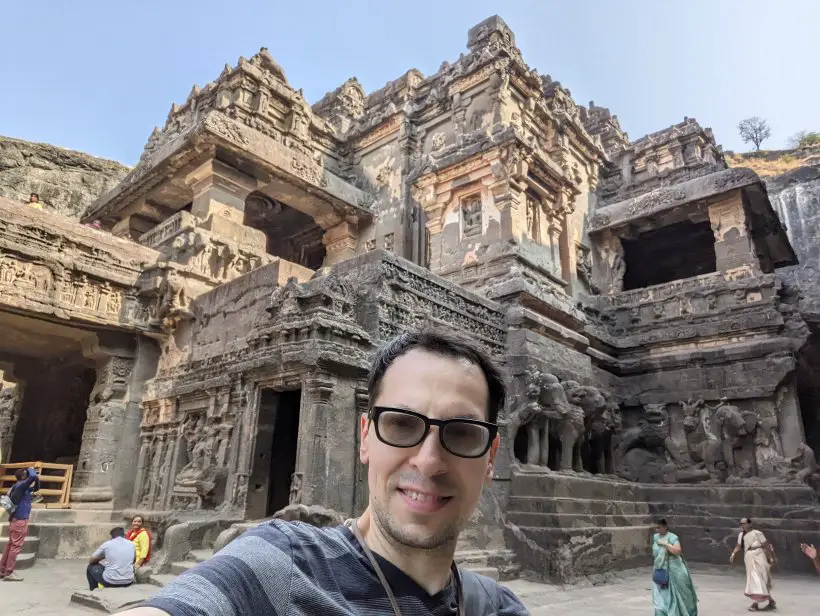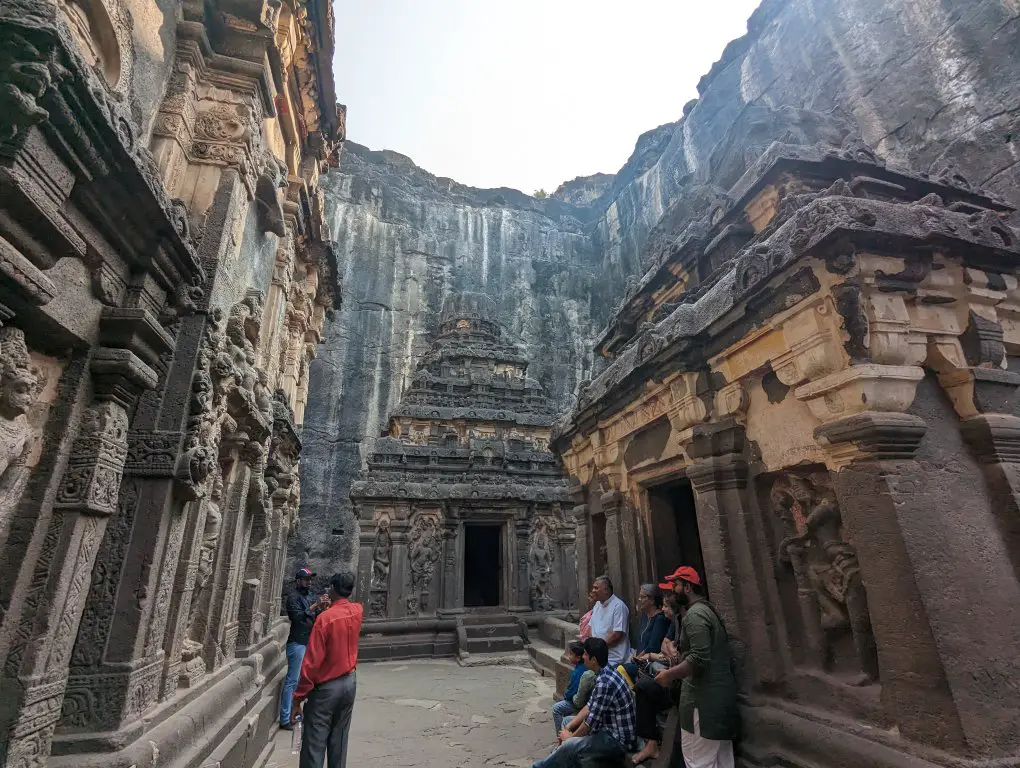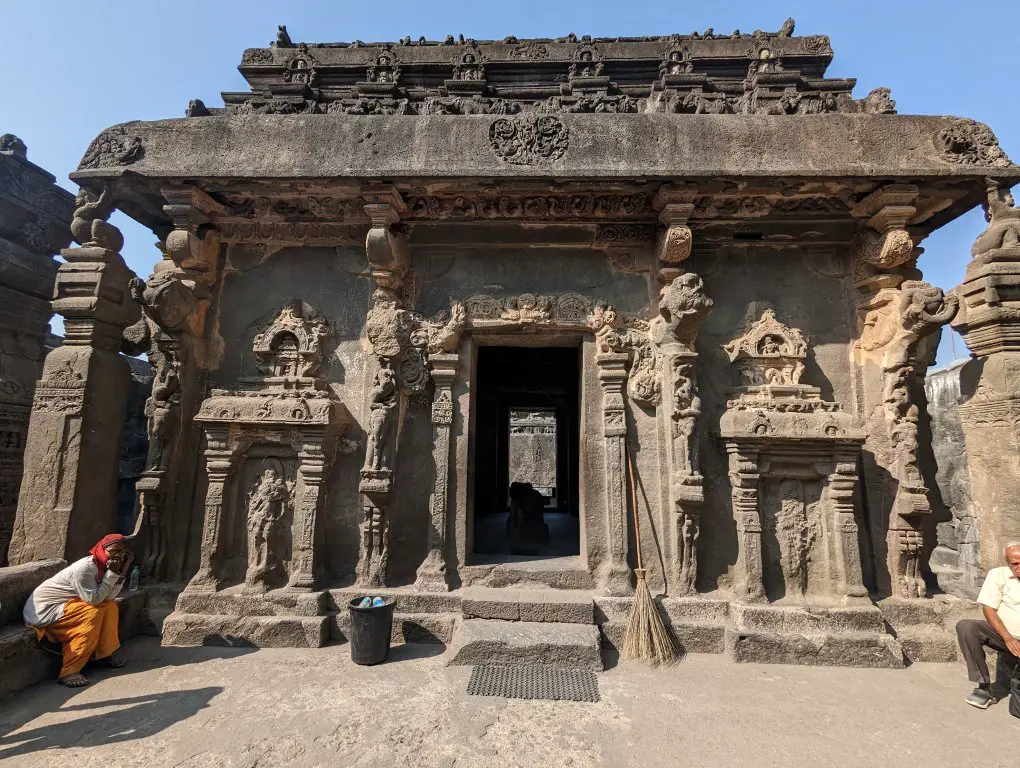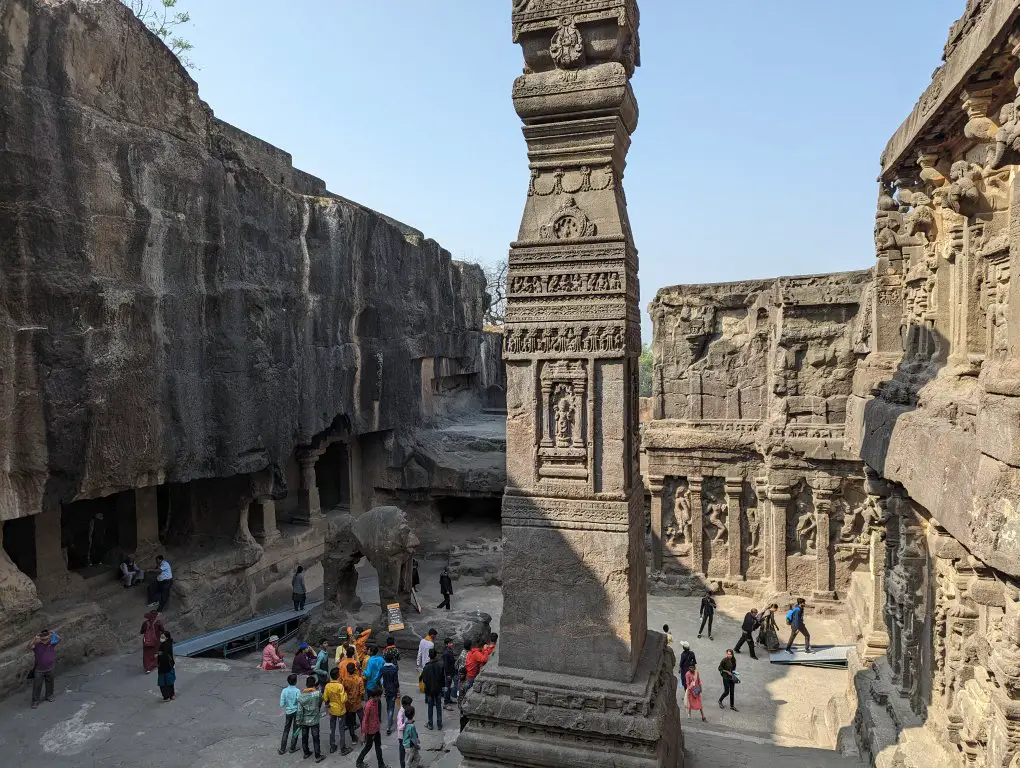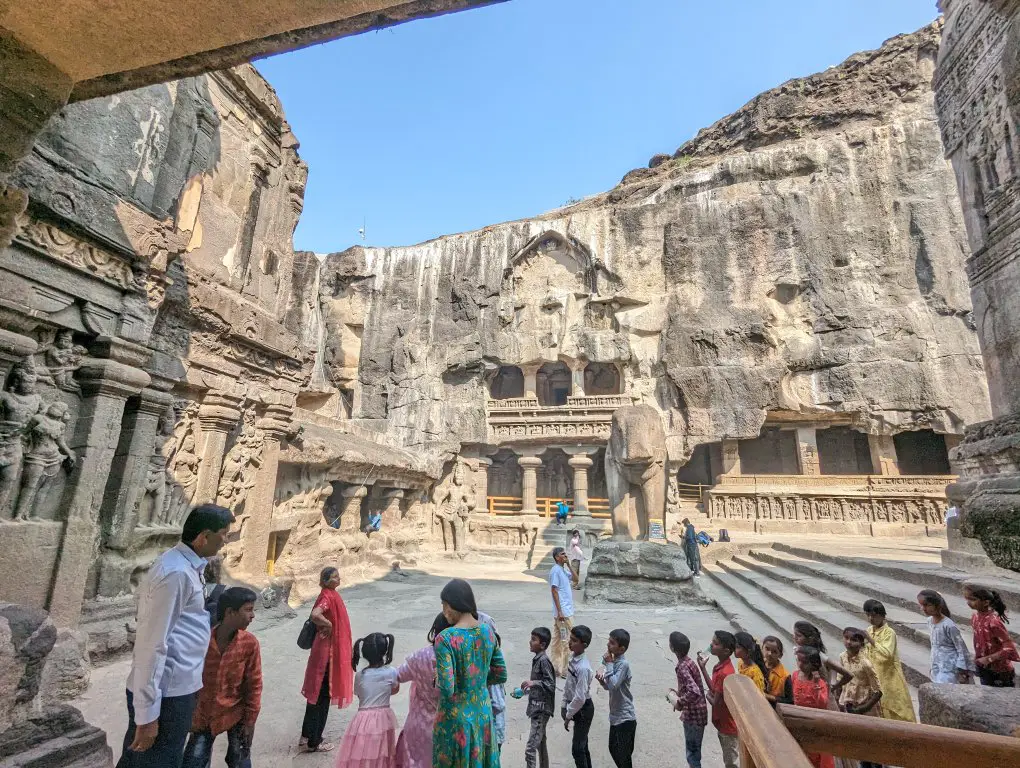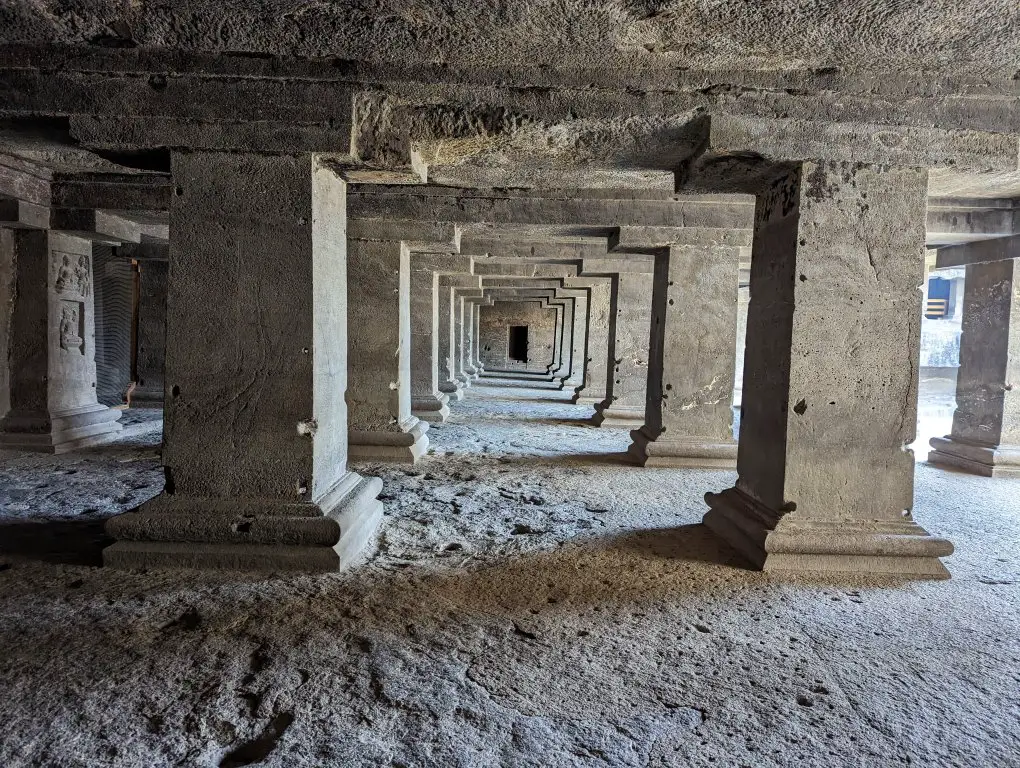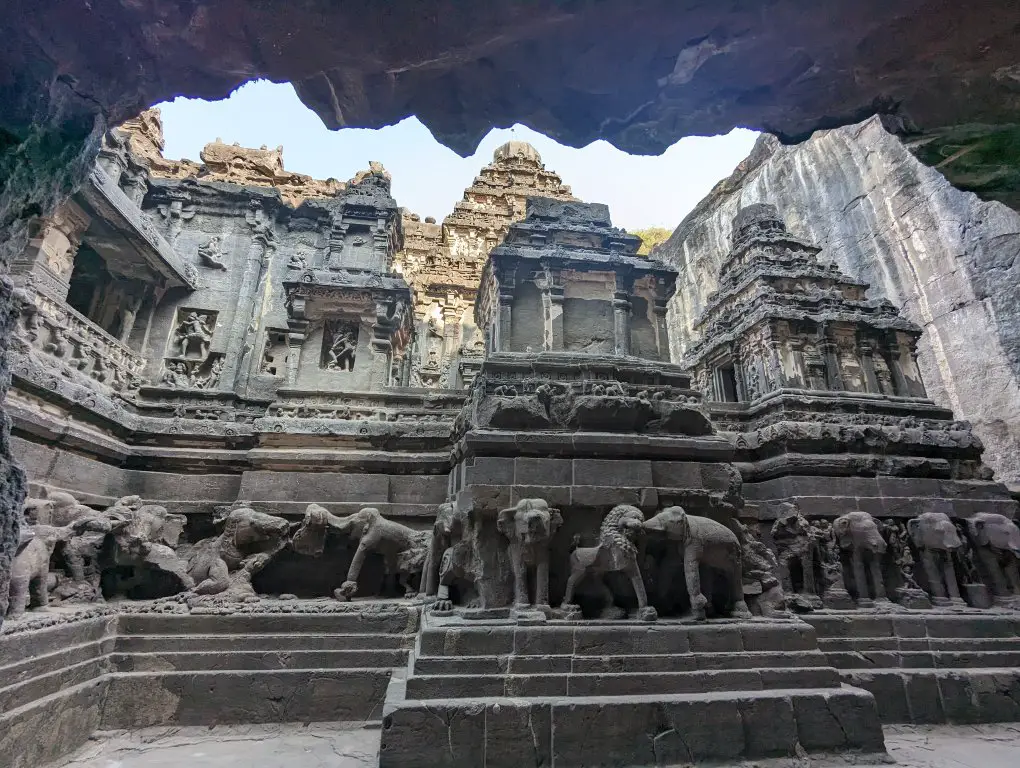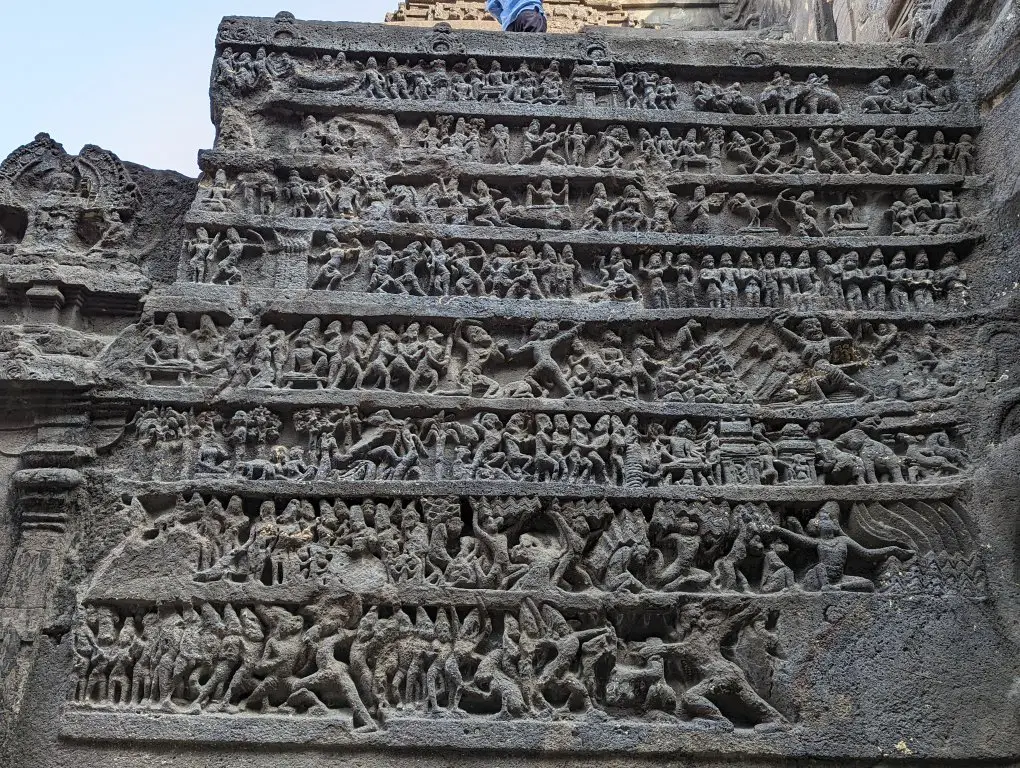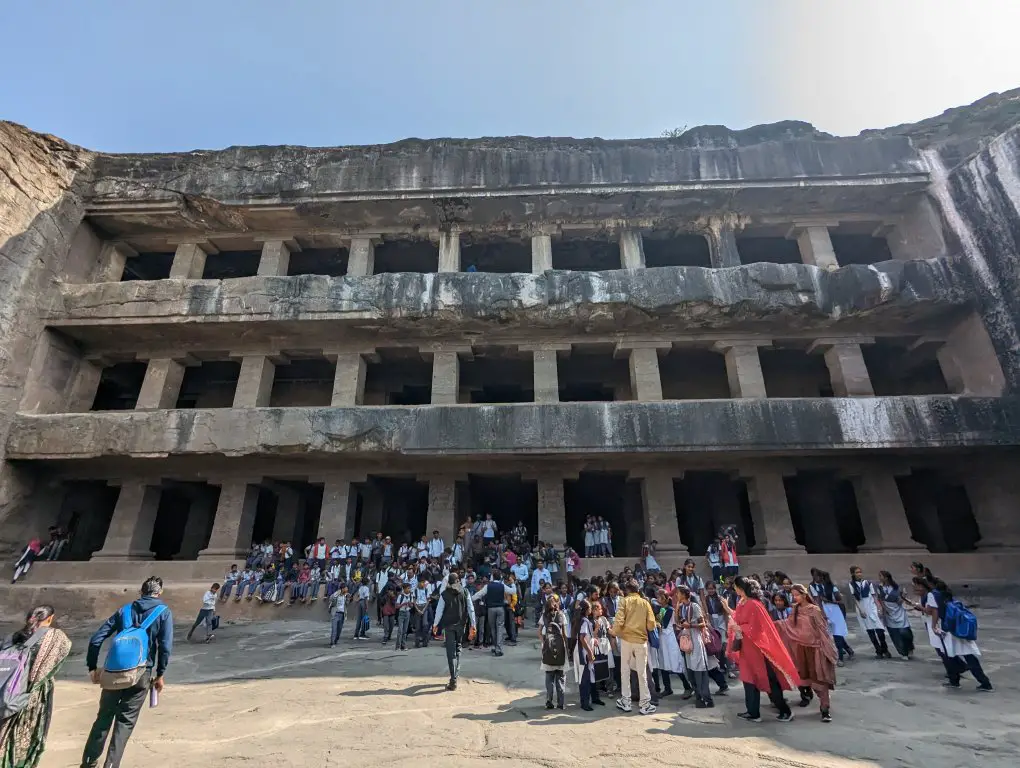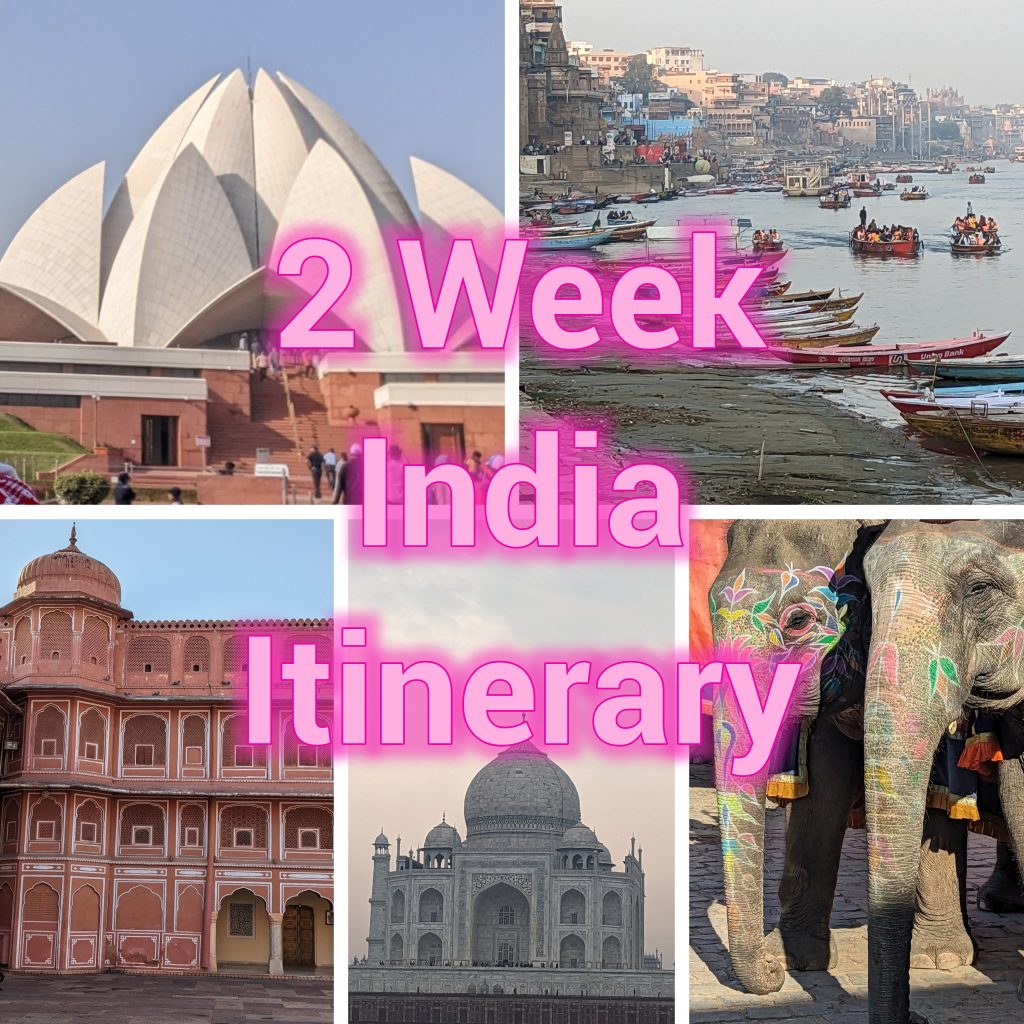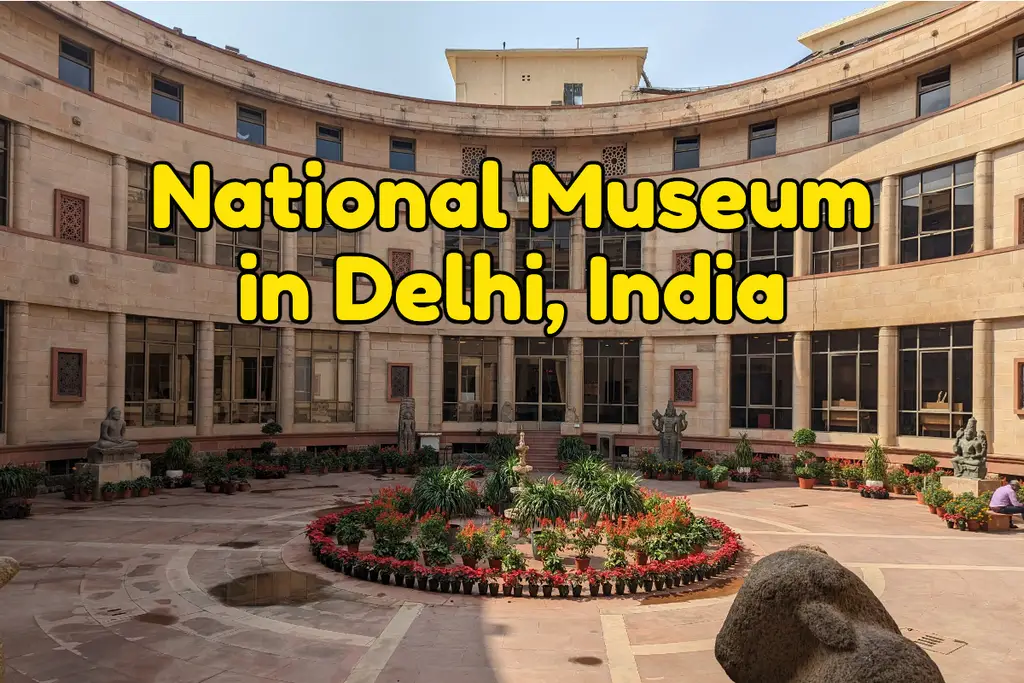
Ellora Caves are one of the most impressive examples of rock-cut architecture in the world. Located in Maharashtra, India, Ellora Caves consist of 34 caves that were excavated out of the Charanandri hills between the 6th and 10th centuries CE. The Ellora Caves are well known for their stunning and unique architectural and artistic beauty and despite the long journey to get there, visitors are well rewarded.
Ellora Caves – Details
Map Location: Ellora Cave Rd, Ellora, Maharashtra 431102, India
How to get there: Fly to Aurangabad airport, then drive 50 minutes to Ellora Caves
Closest Major City: Mumbai. 6.5 hours away by car.
Why go there: Go to Ellora Caves because you care about culture, art, history and you want to see something incredibly unique. Ellora Caves are hand carved by 3 religions over multiple centuries and generations and today you can still walk, climb and explore this amazing place. As a bonus a visit to Ellora Caves gives you the ability to go to the Ajanta Caves.
Kailash Temple & my first impression entering Ellora Caves
When you first walk up to Ellora Caves, you see simple caves that appear to be carved into the hillside. Then an area that appears like an entrance. Nothing from the outside implies that there is anything amazing inside the cave, the entrance acts as a visual block to what appears just inside its walls. Once I walked through that entrance I was blown away, I had walked into Cave 16 – Kailiash Temple. This particular area in Ellora Caves, is considered to be one of the most remarkable rock-cut temples in the world.
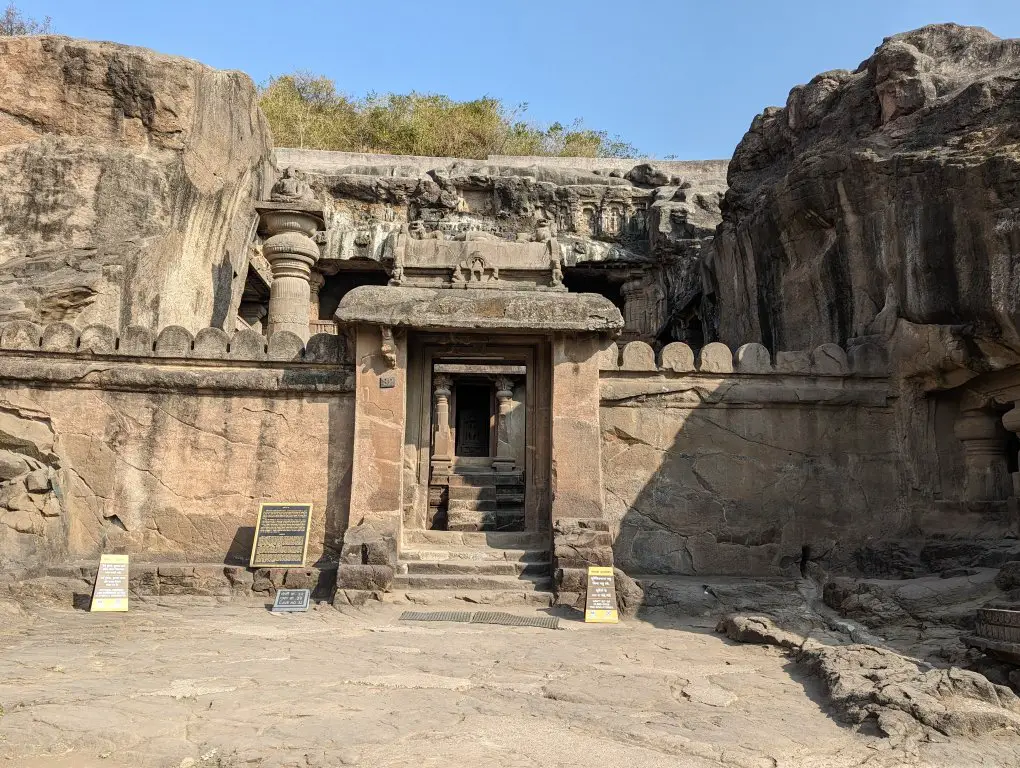
I was greeted by a statue of an elephant and a number of gigantic structures reaching up to the sky, all with 100% of its surface carved into statues that tell various stories. I learned that the Kailiash Temple was designed to replicate the appearance of Mount Kailash, the abode of Lord Shiva, and contains the largest monolithic structure in the world. Walking around the structures I was amazed by the artistry and even more amazed that these structures were carved from a single rock formation which highlighted the impressive feat of engineering and craftsmanship of the people who made it.
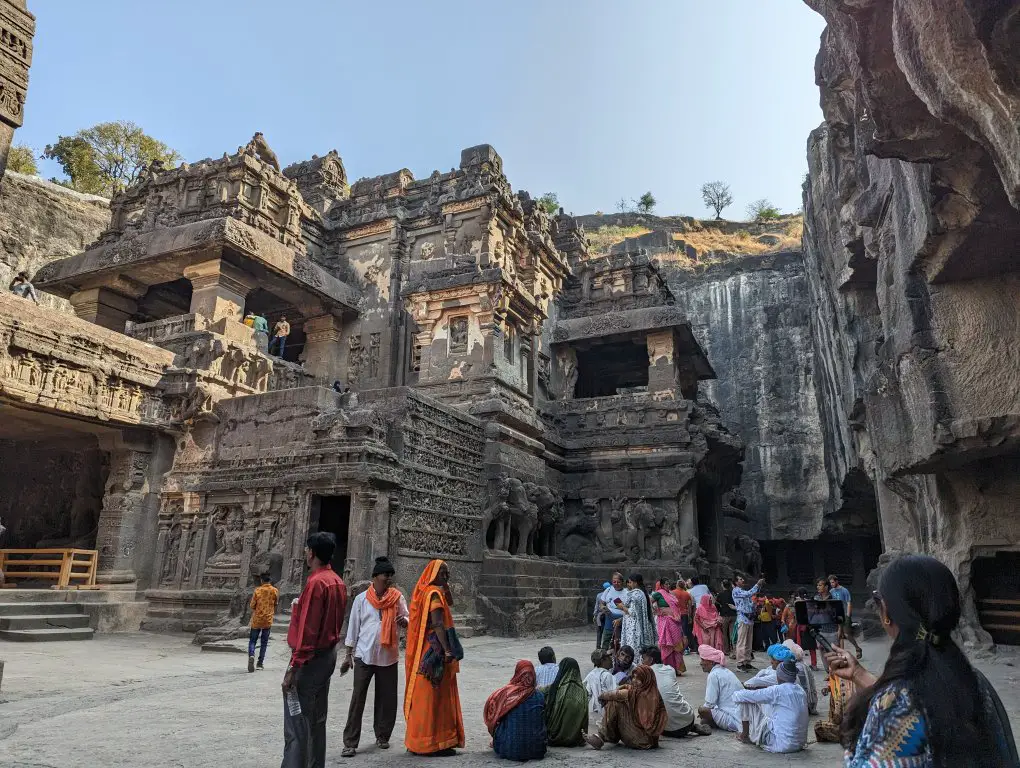
Ellora Caves as Art and Engineering works
The caves at Ellora are not simply structures carved into the rock; they are complex and ornate works of art that showcase the skill and creativity of the craftsmen who built them. The caves are adorned with intricate carvings, sculptures, and paintings that depict religious and mythological scenes. Many of the caves also have grand halls, pillars, and courtyards that would have been used for rituals and ceremonies.
The caves are also known for their unique engineering and water management systems, which allowed water to flow through the complex for irrigation and daily use.
Who made Ellora Caves
The 34 rock-cut temples and monasteries were excavated out of the Charanandri hills and as a group they are called Ellora Caves. They were carved by hand for over 600 years, from the 6th to 12th centuries and the work continued from generation to generation and spanned multiple —. The caves were carved into the rock by three different religious faiths – Buddhism, Hinduism, and Jainism. The caves are arranged in a north-south direction, and the first 12 caves are Buddhist, followed by 17 Hindu caves and five Jain caves. The Buddhist caves are the oldest, dating back to the 6th century, while the Jain caves are the latest, dating back to the 10th century.
Ellora Caves are considered to be a symbol of India’s multicultural heritage, as they showcase the religious and cultural diversity of the country. It is incredibly rare to find so many religious structures from different faiths in such close proximity to each.
Ellora Caves – Hidden Treasure
The people who created Ellora Caves also hid treasure there. As of today, there have been several hidden treasures discovered at the Ellora Caves over the years, including gold and silver coins, statues, and ancient artifacts. These discoveries have shed light on the historical and cultural significance of the caves.
Ellora Caves in Video Games
There are several video games that have taken inspiration from Ellora Caves in one way or another. Here are a few examples:
Uncharted: The Lost Legacy – This action-adventure game features a chapter set in the Western Ghats region of India, which includes the fictional version of the Ellora Caves. The player navigates through the caves while solving puzzles and battling enemies.
Assassin’s Creed Chronicles: India – This 2.5D platformer game takes place in 1841 India and includes a level set in the Ellora Caves. The player must navigate through the cave complex while avoiding traps and enemies.
Tomb Raider: Underworld – This action-adventure game features a level set in the real-world Ellora Caves. The player must solve puzzles and defeat enemies while exploring the caves.
Age of Empires II: The Conquerors – This real-time strategy game includes a campaign based on the exploits of the 12th-century Indian king, Prithviraj Chauhan. One of the missions takes place in the Ellora Caves, where the player must defend the complex from invading enemies.
These games offer players the opportunity to explore the beauty and mystery that Ellora Caves inpires from the comfort of their own homes.
Ellora Caves in Movies
The Darjeeling Limited (2007) – This Wes Anderson film features a scene where the main characters visit the Ellora Caves as part of their journey through India.
The Myth (2005) – This Hong Kong-Chinese movie features the Ellora Caves as one of the locations where the protagonist travels to on his quest.
The Extraordinary Journey of the Fakir (2018) – This French-Indian comedy-drama movie features a scene where the main character visits the Ellora Caves.
Lagaan (2001) – This Bollywood movie was set in the 19th century and featured the Ellora Caves as a backdrop in a few scenes.
The Jungle Book (2016) – Although the Ellora Caves are not featured directly in this movie, they served as an inspiration for the design of King Louie’s temple in the movie.
Ellora Caves Conclusion
The Ellora Caves are a testament to the rich cultural and religious diversity of ancient India and an unparalleled example of rock-cut architecture. A visit to Ellora Caves is a journey back in time and an experience that will leave a lasting impression on anyone who is interested in history, art, or religion. It is one of the more unique places on this earth so if you have the chance, go out there and experience it.
